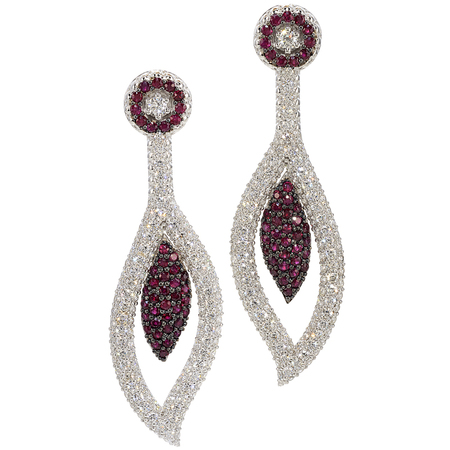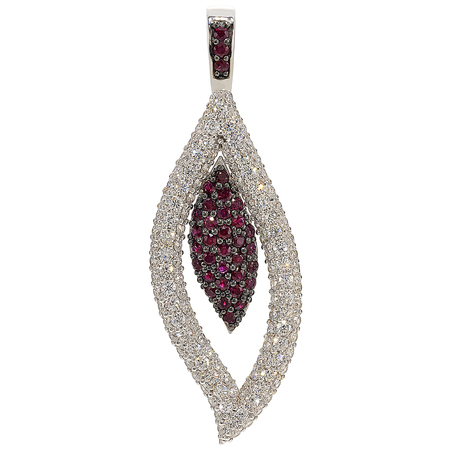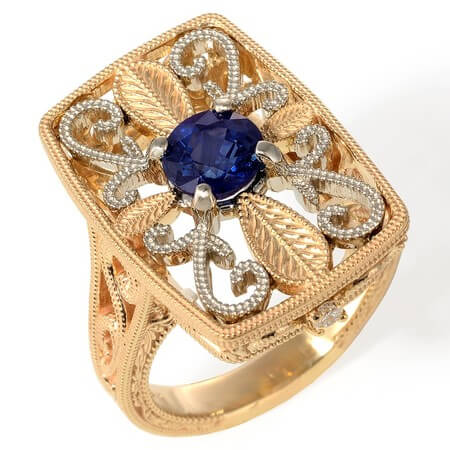My passion for striking and mesmerizing colors is not limited to gemstones and our jewelry. Shopping my selection of one-of-a-kind and limited edition jewelry, it is evident the inspiration for my designs is often derived from nature, as seen in our ruby drop earrings and ruby drop pendant based on leaf shapes. Another piece, our 14 Kt gold sapphire cocktail ring with white gold intertwining the yellow gold setting was inspired by a pattern I saw on a fence gate while touring a castle in Germany.
Seeking further inspiration, my wife and I briefly escaped the long and cold Indiana winter with a short visit to Atlanta in late February. My wife is a former Master Gardener and couldn’t pass up the opportunity to tour the Atlanta Botanical Gardens spring flower show entitled ‘Atlanta Blooms’; I decided that walking around the Gardens in temperatures in the high 70’s and full sun would not only be a great cure for the winter blahs, but it would also offer ideas for new jewelry designs.This year’s show theme is ‘Film’. A giant old fashioned film reel adorned with red carnations serves as its symbol.
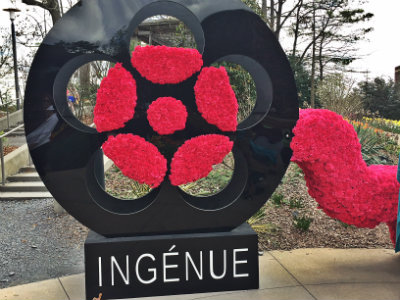
The area the Gardens cover is huge, approximately 30 acres, which is home to numerous smaller themed gardens and display buildings. The colorful spring flower display includes hundreds of thousands of lovely tulips, daffodils, hyacinths, crocuses and perennial bulbs. We were there for an afternoon and covered only a fraction of the sights.
The grounds include a myriad of plant and animal collections. In addition to the spring flowers are permanent displays featuring orchids, roses, hydrangeas, hardy palm trees, dwarf and rare conifers, cobra lilies, summer bulbs, water plants, fruits and vegetables, high elevation plants, tropical and sub-tropical plants and desert plants. The animal collections included turtles, tortoises, frogs, geckos and birds (finches, quail). The themed gardens included the conservation gardens, a Japanese garden and a children’s garden, which included:
A splash pad for those hot summer days
An active outdoor play area with a tree house, slide, climbing nets and rope bridges for children to play on
A hands-on play area which includes a water ‘painting’ wall, a balsa wood construction area, outdoor musical instruments for the children to play on and an outdoor amphitheater for occasional performances
The Garden also features dozens of permanent pieces of art, including numerous sculptures and water features. Some of my favorites were a large sculpture of a butterfly and 2 Dale Chihuly pieces, which according to the Garden’s literature are:
- The Nepenthes Chandelier, a one-of-a-kind creation by Chihuly. It is a captivating assemblage of brightly colored glass in hues of yellow, chartreuse, and gold with touches of red. The chandelier is the first thing you encounter as you enter the Visitor Center.
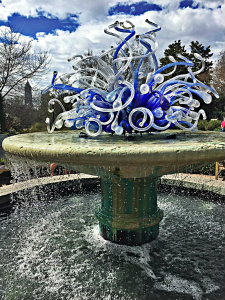
- (Above) Chihuly's Parterre Fountain Installation, a one-of-a-kind sculpture in blue and white, interpreting shapes and colors of water, ice and sky. A captivating assemblage of twisting, brightly colored glass, the sculpture sparkles in Levy Parterre Fountain. It is especially lovely lit up after dark.
An extremely important part of the Atlanta Botanical Garden’s mission is conservation and education. The Garden is actively involved in local and global conservation research. Their International Intern Program facilitates the exchange of ideas, expertise and plant collections between botanical gardens and institutions around the world.
In their Center for Southeast conservation, they serve as a hub for the conservation of imperiled species and habitats in the Carolinas, Tennessee, Georgia, Florida, Alabama, Mississippi, and Louisiana. The heart of the plant conservation program at the Garden is the Conservation Support Greenhouse. Since 1989, endangered plants have been propagated and nurtured for numerous recovery projects. In the Tissue Culture Laboratory, they propagate plants that are difficult to breed.
The Garden also has an active amphibian conservation program with live displays. The mission of the program is to promote the conservation of amphibians through education, research and in situ conservation.
Did you know, that according to the Garden’s website, spring flowers have personality! Which bulb do you identify with?
- Tulip: Tulips come in many bright, saturated colors. They love the sun so will seek out the best angle for light. Striking and bold, tulips clearly love being the center of attention. Tulips are thought to be the symbol of perfect love.
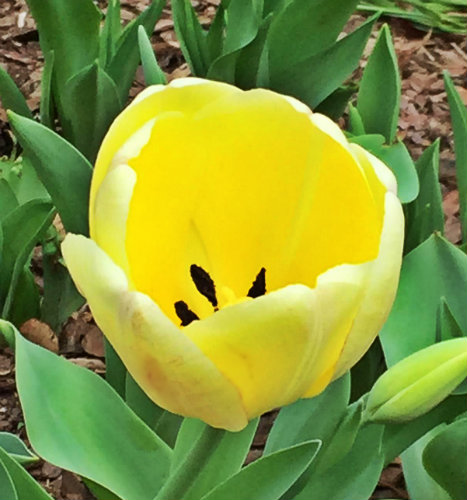
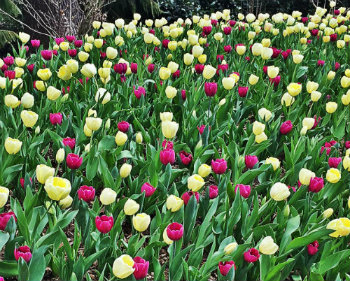
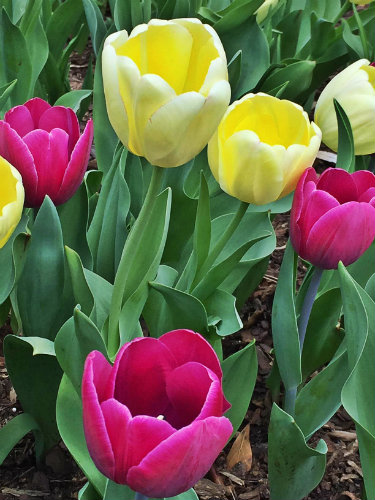
- Daffodil: Daffodils are trumpet shaped so seem to announce spring in a bright, trumpeting way. Generally golden-yellow and white, daffodils are seemingly quite friendly, growing together in fields and meadows. They are thought to be a symbol of rebirth and unrequited love.
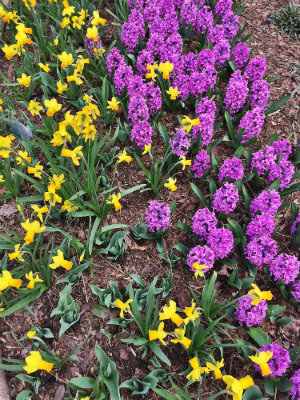
- Hyacinth: The hyacinth is a single dense spike of highly fragrant flowers. They are bell-shaped and beautiful, in many colors including pink and true blue. Hyacinth are thought to symbolize sports and play, signifying an adventurous and playful nature.

- Crocus: Although more solitary and small of stature, crocus are determined and hardy. They are found in a wide range of habitats and thrive in late winter/early spring, growing through snow if need be. Crocus are thought to be a symbol of healing and foresight, signifying wisdom.
All in all, we had a wonderful afternoon exploring all that the Atlanta Botanical Gardens had to offer.


